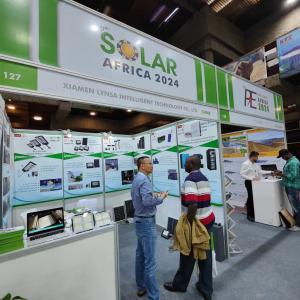Household Photovoltaic Power System Common Problems
There are more and more people choosing to install their own photovoltaic power system. The following are some of the frequently asked questions about the installation, operation and maintenance of household photovoltaic power system. We hope the answers will help you learn more about PV power system and work out your problems.1、In order to prevent the photovoltaic modules from being hit by heavy objects, can I install a wire protection net for the photovoltaic array?
It is not recommended to install a wire protection net. The installation of wire protection nets on the photovoltaic array may create partial shadows over the components and form a hot spot effect, thus affecting the power generation efficiency of the entire photovoltaic power station. In addition, since qualified photovoltaic modules have passed the ice hockey impact test, there is no need to install protective nets under normal circumstances.
2、How to choose out qualified system accessory products and how long is the warranty period?
It is recommended to choose system accessories products that have been certified by National Certification Body. The key components and raw material models, specifications and manufacturers should be consistent with the certified products. In addition, the specifications, models and technical parameters of all system accessories should match with the design of the entire system. Generally speaking, components require a warranty of at least 20 years, and inverters require a warranty of at least 5 years.
3、Do I need to install a photovoltaic power generation system on an existing building with additional wiring? How to connect it to the existing electrical system in my home?
The wiring of the photovoltaic system is divided into DC part and AC part, and the two parts of the line need to be wired separately. The AC part needs to be connected to the power grid, and the grid-connected point is located near the user’s meter, and finally forms a connection with the existing electrical system in the user’s home.
4、Do I need to immediately change the damaged components under the scorching sun?
You should not immediately change the components. If you want to change, it is recommended to do it in the morning or late afternoon. You can ask operation and maintenance personnel of the power station for help.
5、Does I need to disconnect the photovoltaic power generation system during thunderstorms?
Distributed photovoltaic power generation systems are equipped with lightning protection devices, so there is no need to disconnect them. It is recommended that you can choose to disconnect the circuit breaker of the combiner box and cut off the circuit connection with the photovoltaic module to avoid the hazard of direct lightning strikes. The operation and maintenance personnel should check the performance of the lightning protection module regularly to avoid the harm caused by the fault of the lightning protection module.
6、What should we pay attention to in the fire prevention and protection of household distributed photovoltaic power generation systems?
It is prohibited to stack flammable and explosive materials near the distributed power generation system. In the event of a fire, the loss of personnel and property will be immeasurable. Except basic fire safety inspection measures, photovoltaic systems are also supposed to have self-detection, arc and fire recognition functions to reduce the possibility of fire. In addition, it is necessary to reserve fire prevention and maintenance channels every 40 meters, and there must be an emergency DC system disconnect switch.
7、Will there be power shortage when it is quite cold in winter?
The power generation of the photovoltaic system is indeed affected by temperature, but the impact is very small. The factors that directly affect the power generation are the radiation intensity, sunlight and the working temperature of the solar cell components. In winter, the temperature is relatively low and the duration of sunlight will be short, so generally the power generation will be less than in summer, which is also a normal phenomenon.
8、Will the photovoltaic power generation system still work in continuous rainy or hazy days?
Photovoltaic cell modules can also generate electricity when the light is at a low level. Haze does have an impact on photovoltaic power generation, but the impact on power generation efficiency does not exceed 5% (except for heavy haze). Under normal circumstances, the power generation in rainy days is only about 10%-20% of normal power generation. Due to continuous rainy or haze weather, the solar radiation illuminance is low, if the working voltage of the photovoltaic system does not reach the starting voltage of the inverter, the system will not work. The grid-connected power generation system and the distribution network are operated in parallel. When the photovoltaic system cannot meet the load demand and can not work, you can use the electricity from the grid So there is no power shortage and power outage.
9、Can the electricity generated by the distributed photovoltaic power generation system during the day be stored for night lighting?
The electricity generated by the distributed photovoltaic power generation system during the day can be stored for night lighting, which requires adding electrical components such as controllers and batteries. During the day, the controller stores the electricity generated by the photovoltaic in the battery, and at night, the controller releases the electricity stored in the battery for lighting. In the absence of energy storage equipment, if the grid loses power, the system will stop working, but if the grid-connected inverter is replaced with a smart micro-grid inverter (hybrid inverter), the system will still operate normally.
10、Is there any requirements for the installation site?
The extreme working temperature range of photovoltaic modules is -40℃ to 85℃. It is recommended to install the PV module in an environment with a temperature range of -20℃ to 50℃. There is no requirement for the altitude of the module installation, but the altitude limitation of other supporting electrical equipment needs to be considered.





